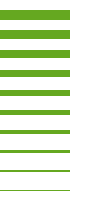https://doi.io-warnemuende.de/10.12754/data-2023-0010
doi:10.12754/data-2023-0010
© Author(s) 2025. This work is distributed
under "Creative Commons Attribution 4.0 International"
The occurrence of Vibrio spp. in the salinity gradient of shallow coastal waters of the Baltic Sea – data set including environmental and microbiological data (EU Biodiversa project BaltVib) (Version 1)
Contributor(s): Victor Fernández-Juárez [DataCollector]; Luis Delgado Zambrano [DataCollector]; Theodor Sperlea [Researcher]; Christiane Hassenrück [Researcher]; Daniel P. R. Herlemann [DataCollector]; Christian Pansch [DataCollector]; Marija Kataržytė [DataCollector]; Thorsten Reusch [DataCollector]; Greta Gyraitė [DataCollector]; Detlef Schulz-Bull [DataCollector]; Heike Benterbusch-Brockmöller [DataCollector]; Susanne Dupke [Researcher]; Anders F. Andersson [Researcher]; Lasse Riemann [DataCollector]; Maria Sierks [DataCollector]; Alwin Ahrends [DataCollector]; Florian Bruck [DataCollector]
Abstract. Data was collected in the framework of the project BaltVib to analyse the microbial community composition in pelagic and benthic habitats with special focus on Vibrio spp. bacteria inside and outside of eelgrass meadows (Zostera marina), and selected macroalgae populations (Fucus spp.) in the salinity gradient of shallow coastal waters of the Baltic Sea. The temporal extent of the dataset is 25.07.2021 to 02.09.2021. The geographic extent of the dataset is spanning from 9°52,655 E to 25°00,698 W and 60°06,547 N to 54°00,8666 S. The measurement depth ranges from 0.2 meters to 7 meters. Salinity ranges from 4 to 14. Environmental parameters measured are: conductivity, temperature, pH, Secchi depth, chlorophyll a, dissolved oxygen, ammonium, nitrate, nitrite, phosphate, silicate, grain size, dissolved organic carbon, dissolved nitrogen, particulate organic nitrogen, particulate organic carbon. Vibrio spp. colony forming units were counted using TCBS agar plates. Abundance of Vibrio vulnificus was determined by ddPCR in water and sediment samples as well as in Zostera marina surface biofilm. Cell counts by flow cytometry contain: Synechococcus, Picoeukaryota, Nanoeukaryota, high-nucleic acid bacteria, low-nucleic acid bacteria. Macrophyte abundance was measured for Zostera marina and Fucus spp..
